Sketchbook illustrations of Invasive Plants
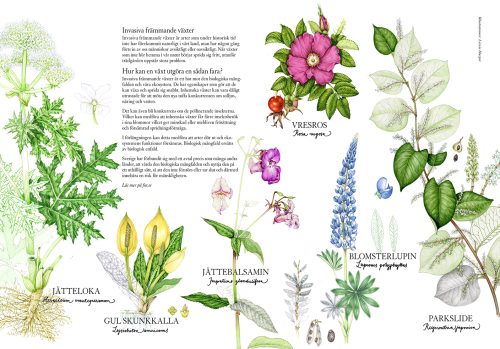
I’ve recently completed work on a series of sketchbook illustrations of invasive plants. The client is FOR Sweden, and the botanical illustrations will be used on a big poster at a horticulture conference.
Project overview
There are eleven plants in total, and each species needed certain aspects illustrating. In all cases I need to supply an image of the plant, details of leaves and flowers, and a habit drawing with a person for scale. With plants where disambiguation was an issue, there also has to be precise images that show differences between similar species.
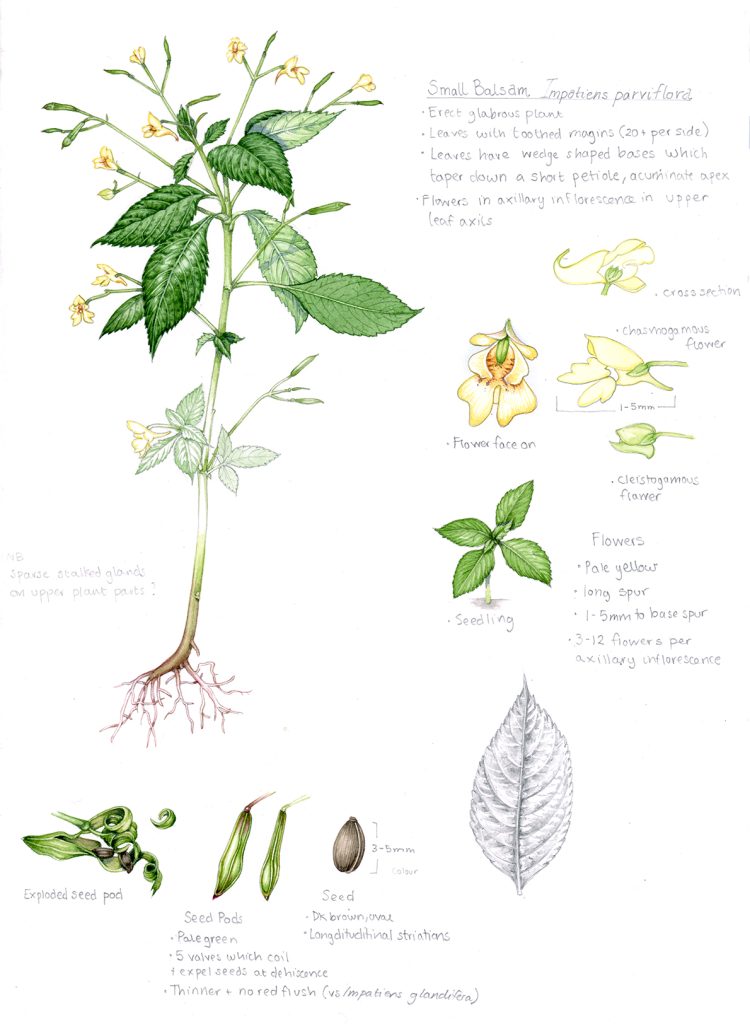
Small balsam Impatiens parviflora
Research
The hardest part of this project is finding the right reference. In the middle of winter (when I worked on this project), there’s no chance of finding so much as a lone leaf growing. I rely heavily on photo reference. Some of the species on the list are not plants I’m familiar with (such as the Persian Hogweed), and I find myself entering Swedish plant names as I quest for the perfect image.
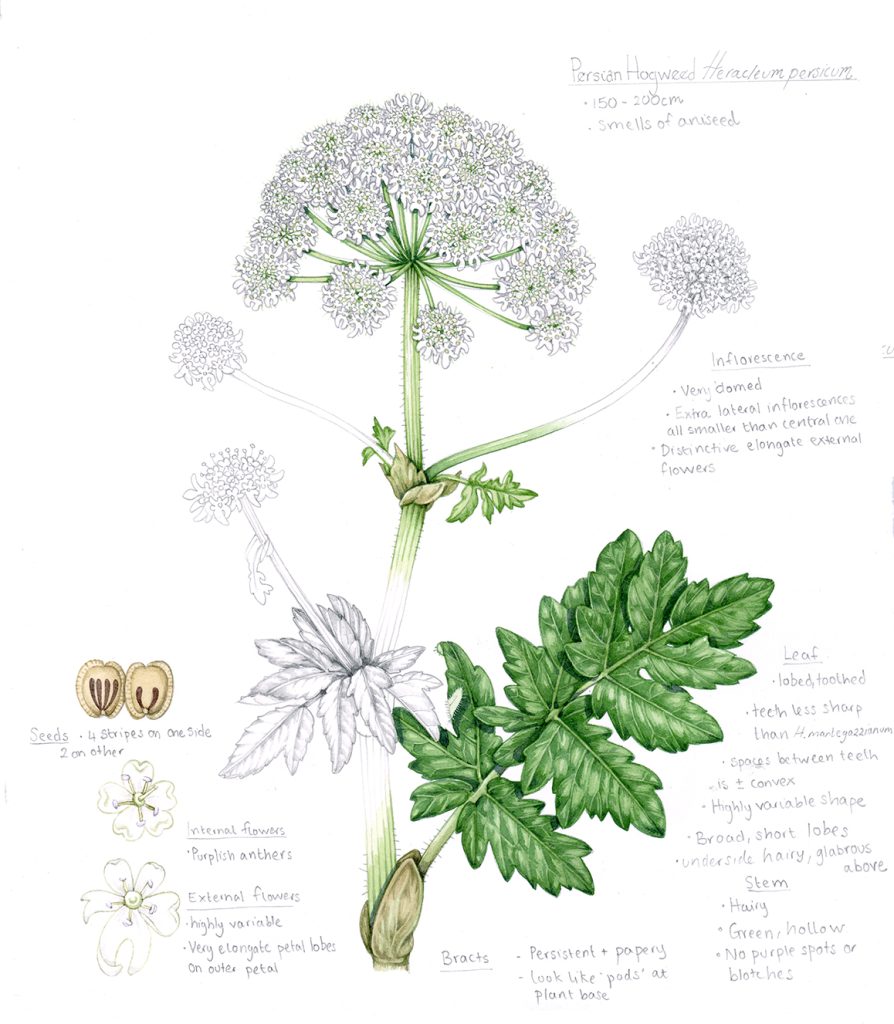
Persian Hogweed Heracleum persicum
Species Illustrated
I won’t go into the trials and tribulations presented by each plant here. The learning curve is steep and I learn a lot, fast. The trickiest element is finding ways to show comparisons between similar species. How do you put two stems, two flowers, a habit drawing, and a leaf outline of two plants onto one sheet of A3 paper? There’s a lot of work relating to composition, and numerous sheets of scrap paper get covered in thumbnail composition sketches. (Lots of my blogs, such as the one on Winter Jasmine include information and examples of doing such thumbnails).
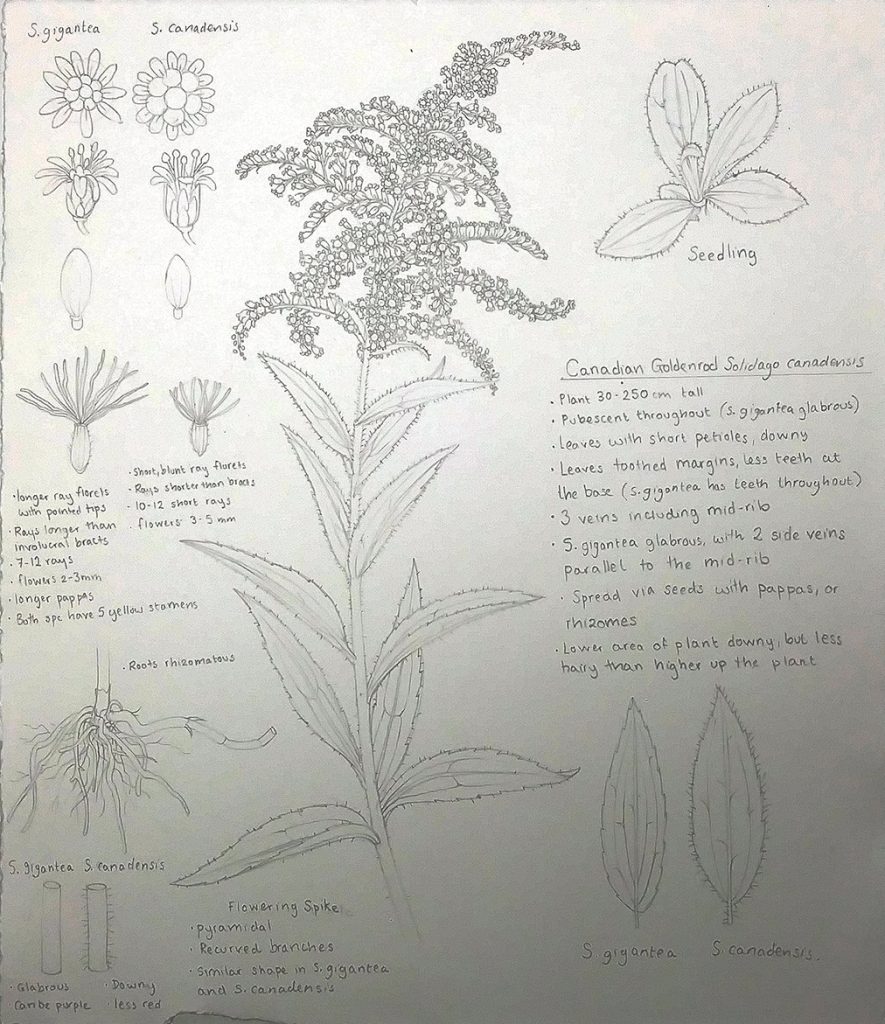
Canadian Goldenrod Solidago canadensis pencil Rough
Approach to illustrations
The client wants sketchbook style illustrations, which is an approach I really enjoy. I add enough information to give an understanding of the plant. I avoid creating a finished and polished botanical illustration of each plant.
The focus is a line drawing of the whole plant, with a few leaves illustrated in full watercolour. There’ll often be a graphite study of a leaf. I might include a line drawing (in paint or graphite) of the leaf venation. Other details, such as cross sections of flowers or information on fruits, will go around the central image.

Exploded seed pod and seeds of Small Balsam Impatiens parviflora
The species comparisons also go around the central image. Below is an image of the Goldenrod sheet as a whole.

Canadian Goldenrod Solidago canadensis sketchbook sheet
And here’s a close-up of a comparison between the flowers of two similar species of Goldenrod flowers (seen in the top left of the larger sheet).
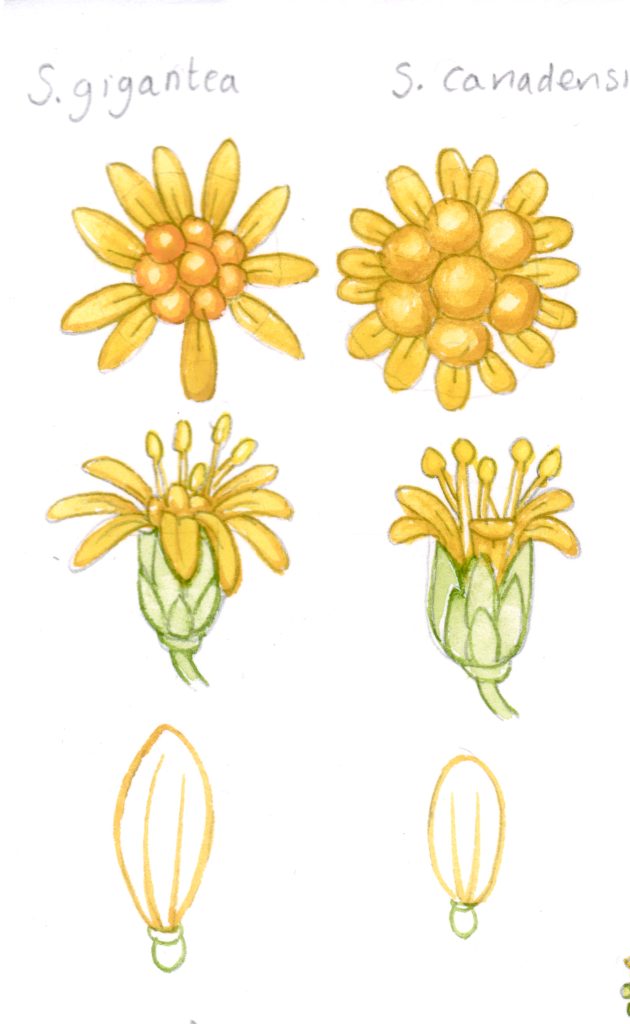
Comparison of Goldenrod Solidago species flowers
These sketchbook studies have an immediacy that pleases me. I love the luxury of being able to be a little more experimental in what I include, leave out, or merely hint at.
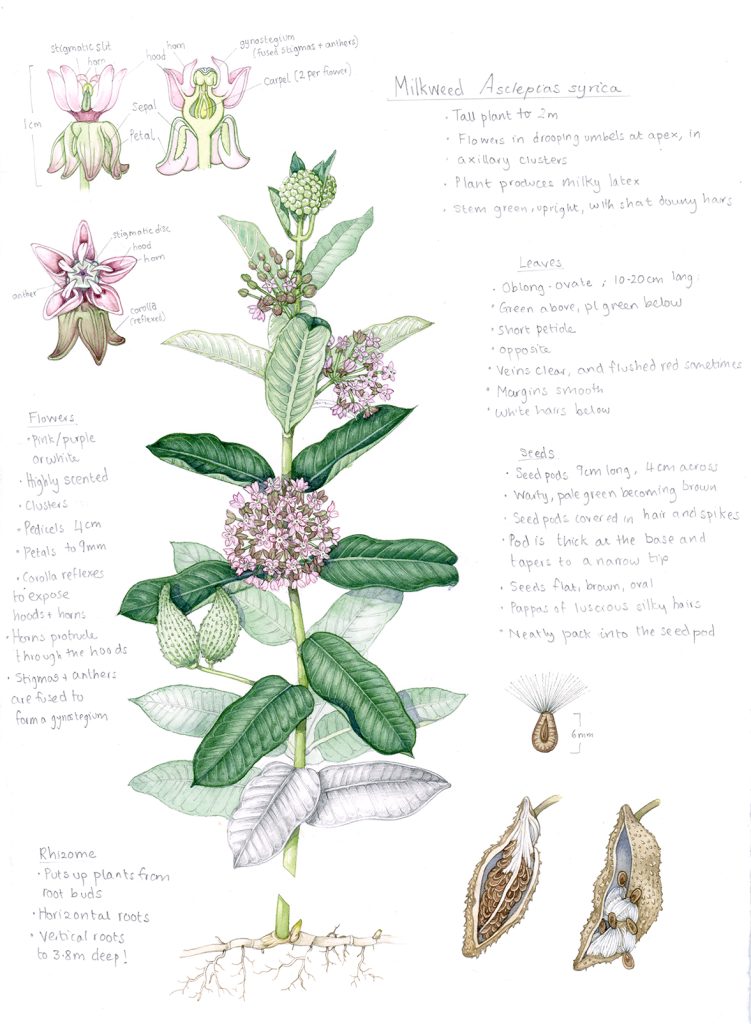
Milkweed Asclepias syriaca showing how you can merely suggest leaves with a sketchbook study
Showcase of illustrations
Below is a selection of the finished illustrations. My favourite is the lupin because it’s so unusual to be given a bright blue flower it work on. The one I enjoyed least was the Tree of Heaven – painting dark glossy leaves is tough and getting the bark details right was a challenge.
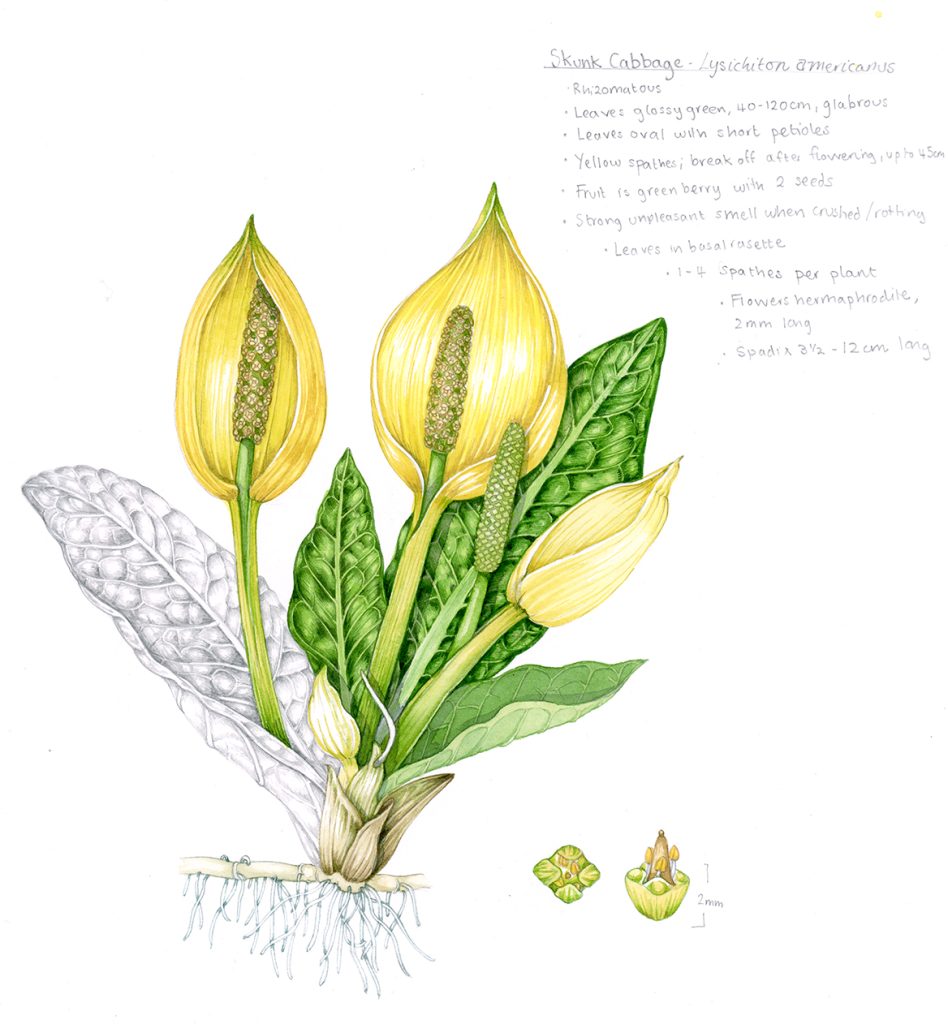
Skunk cabbage sketchbook illustration
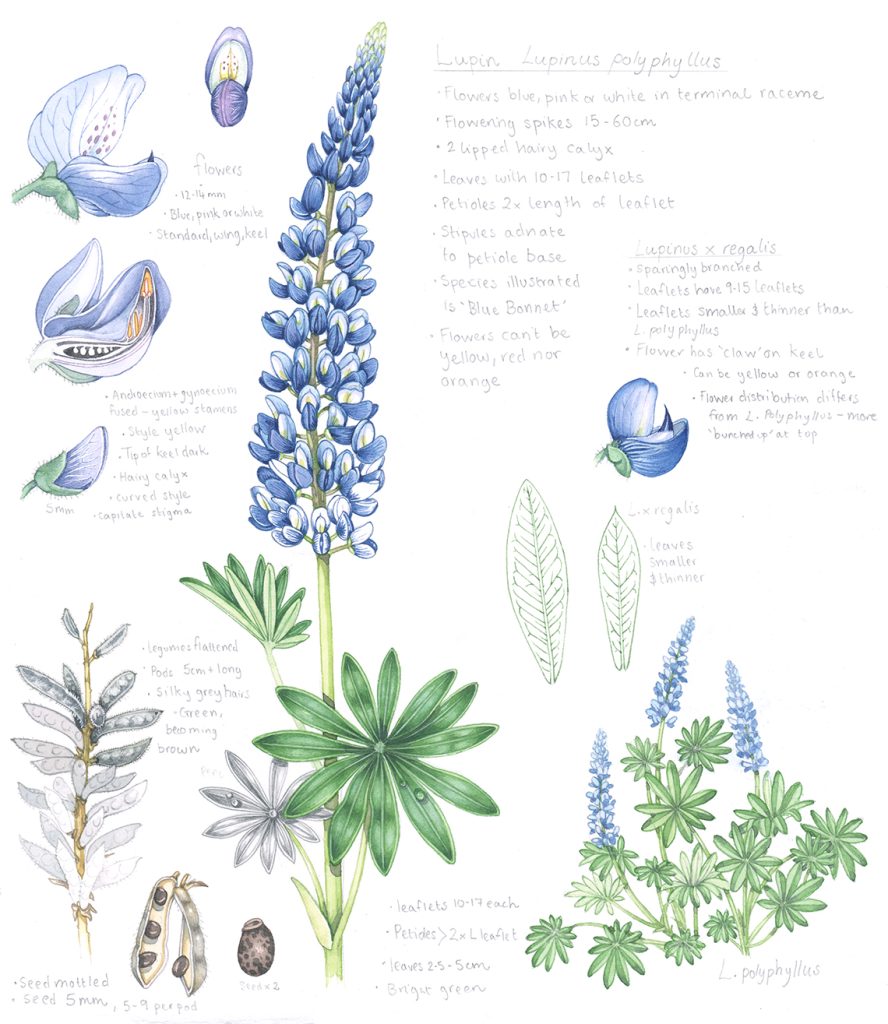
Lupin Lupinus polyphyllus sketchbook illustration
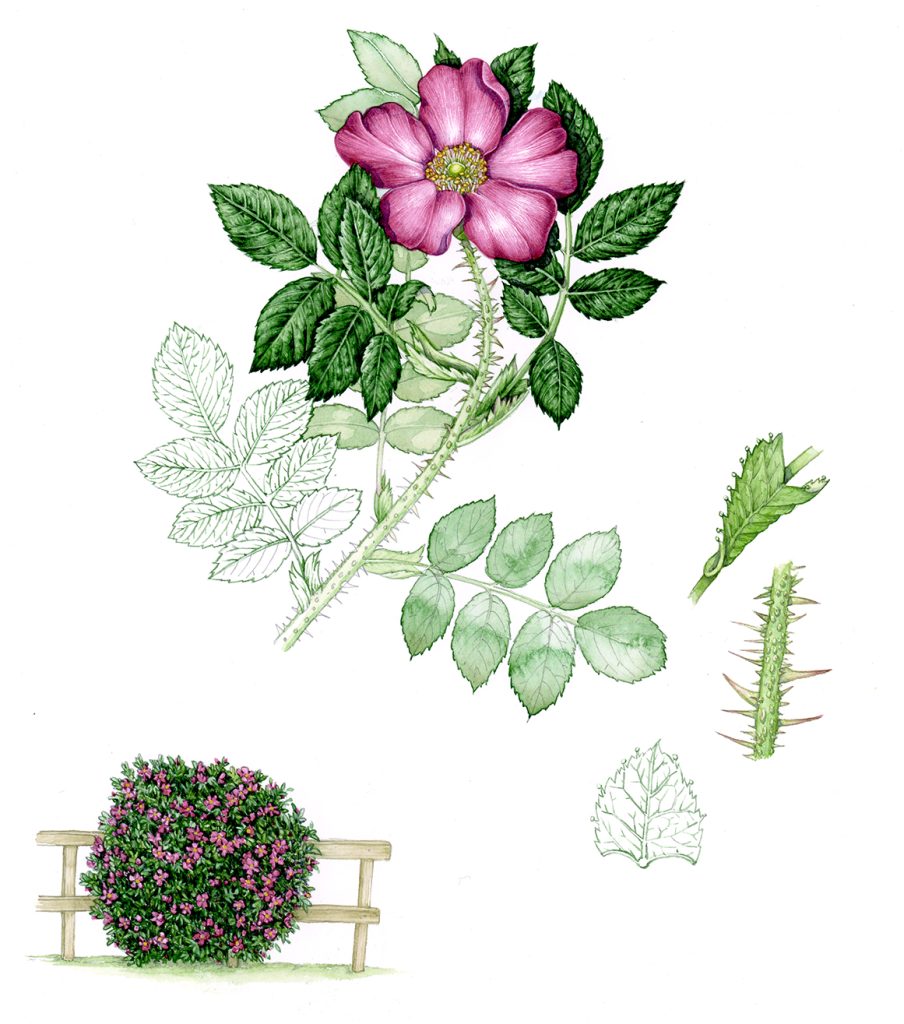
Japanese Rose Rosa rugosa sketchbook study
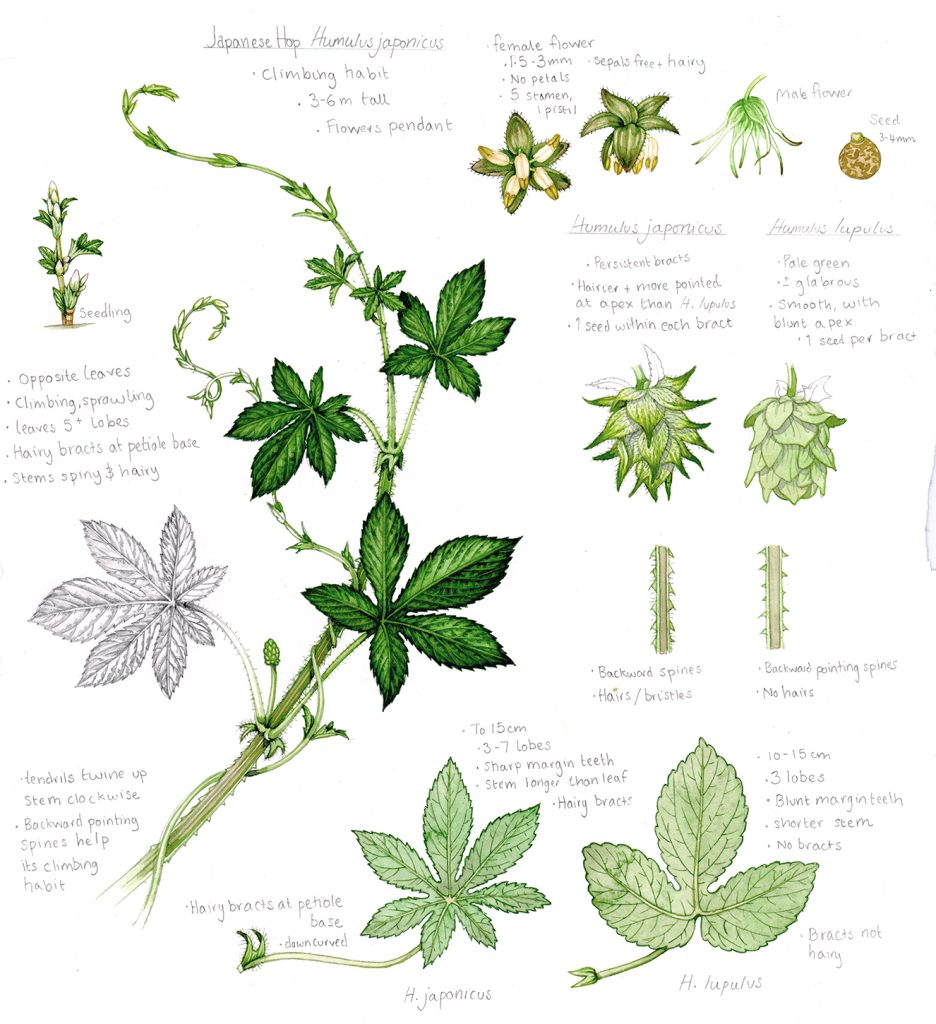
Japanese Hop Humulus japonicus sketchbook illustration
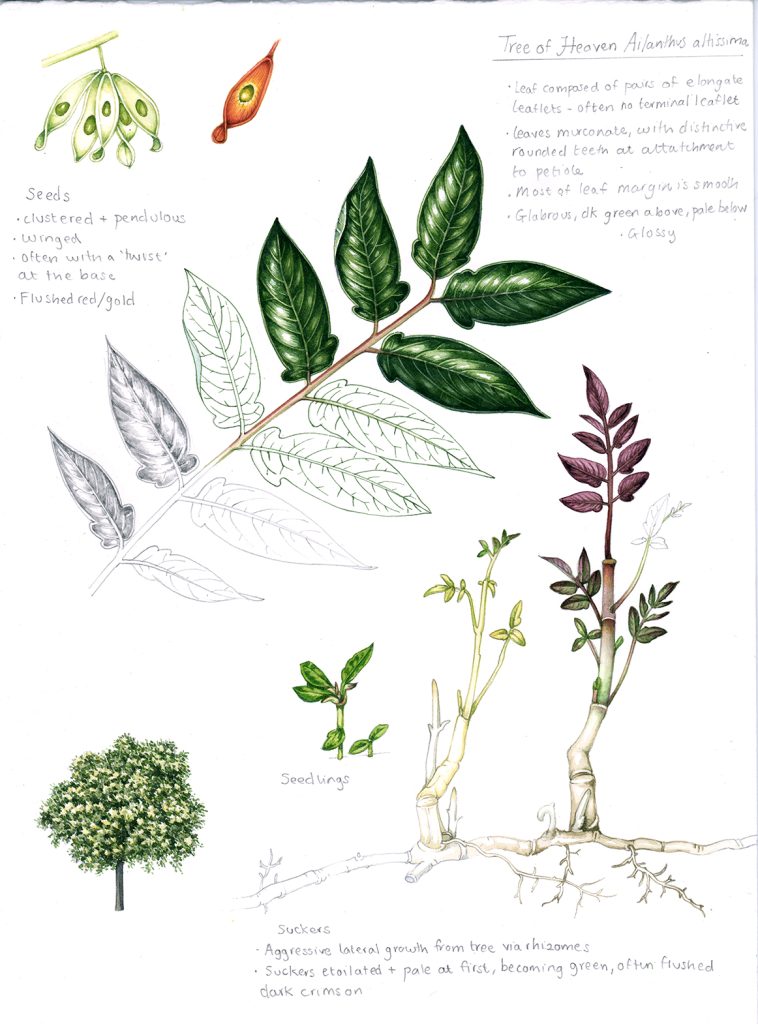
Tree of Heaven Ailanthus altissima sketchbook illustration
Re-use of existing illustrations
I’m vigorous in hanging onto my copyright when I work, and this job is yet another example of why it pays off. (For more on this, look at my blog on doing the illustrations for Flora Margarine). Several of the plants on FOR’s list were one’s I’d already illustrated. The Himalayan balsam and Japanese Knotweed were done years ago for Gridline Magazine. Further details of Japanese Knotweed was completed for “Unearthing the Truth” by Nicolas Seal. The Japanese rose had been illustrated for “The Garden Forager” by Adele Nozedar.
All of these images needed supplementary details illustrating; seed pods, seedlings, stands of the plant in winter. However, the Japanese Rose needed a complete re-draw. However, this not only made the job speedier to deliver, but also saved the client on costs.
Scale Drawings
I’m alright at illustrating plants. Becasue I’m used to it I know how to make the illustrations work out well. The same can not be said of my attempts to illustrate people. So there’s a mental block there that means any time I try to illustrate someone’s face, things go wrong.
The brief calls for scale habit drawings, using a person to show comparative sizes of the plants.
I use my long suffering husband as my “person”, and try to paint his face. Certainly, I have to tweak it on Photoshop, and the finished product doesn’t look great. Providing the person as a pen and ink line drawing, and in full colour gives the client options.
Although the figure illustrations aren’t a success, the information they convey about plant size is helpful.
Conclusion
Thanks to re-using illustrations and clear directions from the client I finish the commission ahead of schedule.
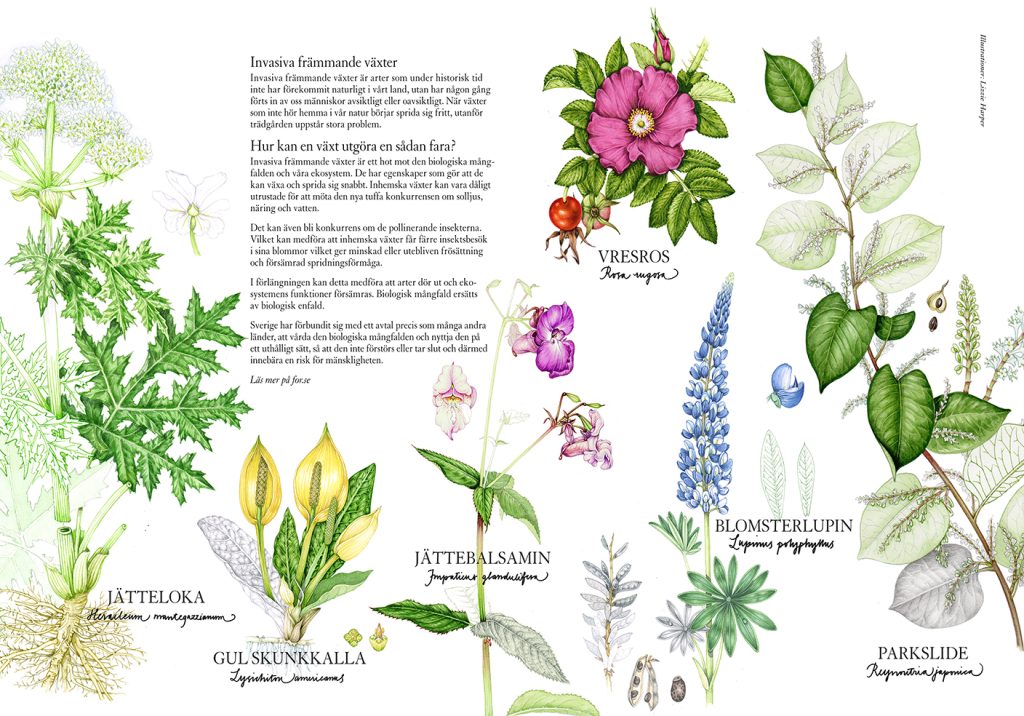
I’m paid, and learn new facts about plants I’ve not illustrated before. I have a whole new batch of original illustrations which I can sell via my online gallery. (Just enter the plant name into the search box). And I remember how fortunate I am to have a job which I adore.


So beautiful and delicate. Impressed with the detail of your work! Thanks for sharing!
Thanks you so much for such a lovely comment. The client is going to commission another 12…I cant wait!
Thank you for showing your beautiful work and the information, very interesting about copyright. I like how you are so open and honest about the good and the challenging sides, it is really helpful for the learning process and to remember that even professional artists find this difficult at times.
Hi Charlotte
Thanks for the comment. Yeah, I have a morbid horror of professionals who make it look like everything is so easy for them, I feel it’s an odd form of dishonesty that ends up making other illustrators feel like they’re mere mortals who couldn’t possibly do what professionals do…and of course nothing could be further from the truth! Anyone can draw and paint and make a living from it, as long as they accept that there are ups as well as downs. And yes, there are certainly some species which when they turn up on a client’s list just make your heart drop. And of course, even though Ive been at it for almost 30 years, I’m still learning. There’s always SO much more to learn, both botanically and in terms of illustration techniques. And I’m glad you find the stuff on copyright interesting, it’s one of the things I#m a bit fierce about because it can be so very useful to hang onto it, and make money from re-using images. Good luck with your own artistic journey, and thanks again for taking the time to leave a comment.
X
Brilliant! I especially like the Tree of Heaven lateral root/shoots. I have been fighting that beast in my yard for years and that is just what it looks like.
Thanks! I’d not seen one before working on this job, so it’s reassuring to hear that the illustrations ring true.
I recently heard about Basant Club and noticed that many players prefer it because the platform feels straightforward and not confusing. It seems designed for users who want a smooth and quick experience.
When people talk about lottery 7, they usually mention its user-friendly design and fast result system. It feels suitable for beginners who want to understand lottery games without complicated rules or long waiting times.
Through mp e district, people can manage multiple public services from one place. The portal improves transparency and makes it simpler for residents to connect with digital government facilities.
With e kalyan Jharkhand, eligible students can track their scholarship status online. The portal reduces manual work and speeds up verification.
With NPCI systems, banking and digital payments have become more efficient. It supports seamless money transfers between banks and financial institutions.